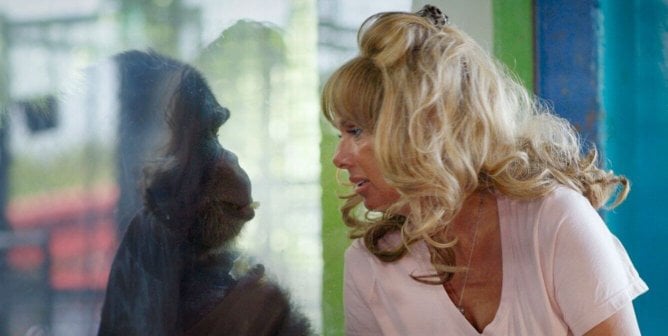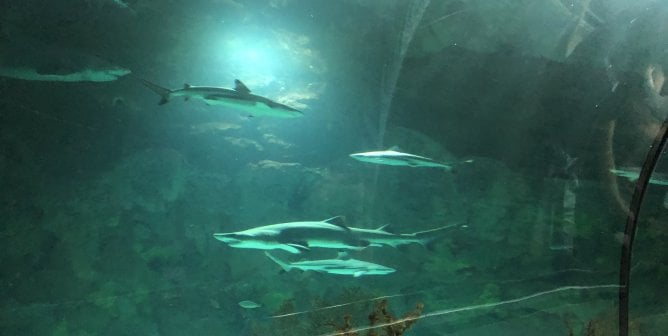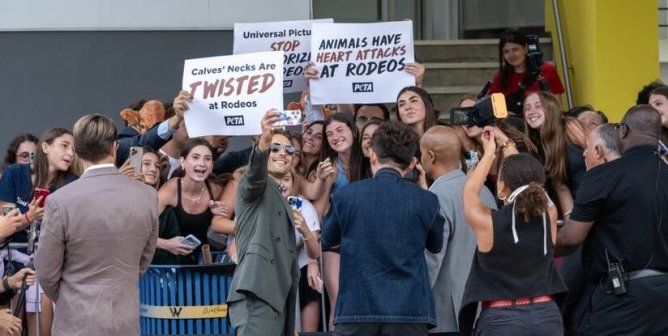People Are Shunning Animal Attractions at Fairs—This Is Why
When I was in grade school, I visited my local county fair. As many fairs do, this one featured cows and pigs on display, a petting zoo, pony rides, rodeo events, and—most upsetting to 10-year-old me—pig races. I’d admittedly been somewhat interested in watching these races. I “loved” animals—and at the time, I naively rationalized that it’d be totally lovely to watch animals do their thing. (I hadn’t quite grasped the “captivity” concept yet.) But then my mom informed me that people bet on the pig races and that the winner’s prize—to my horror—was a pound of bacon.
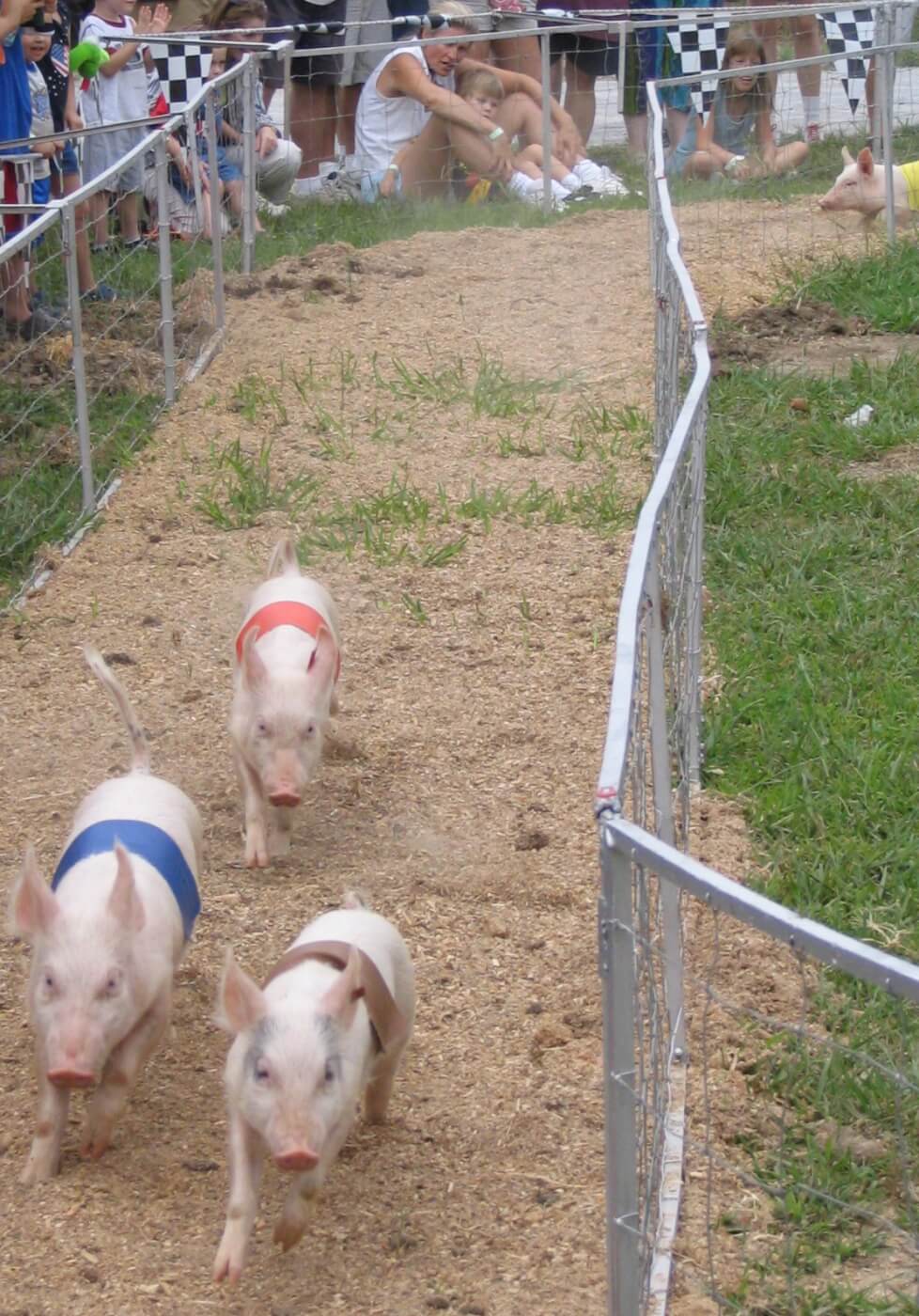
I cried, my mom and I got as far away from the pig races as we could, and my journey toward becoming vegetarian—and later vegan—had begun. As I aged, asked more questions, and did more research, I realized the obvious—fairs are hell on Earth for all animals forced to participate.
Animals at State and County Fairs—Used, Abused … and Killed
The state- and county-fair circuits are rife with exploitative animal displays. Consider just some of the different types of animal exhibits that are featured at fairs:
4-H
4-H encourages its members to raise animals for “projects.” Its programs teach kids to raise animals in a way that will improve their chances of winning contests—i.e., make the most money off their animal “friends.”
After the fair, most of these animals are taken to auctions, where they’re sold to the highest bidders, who typically take them to be slaughtered.
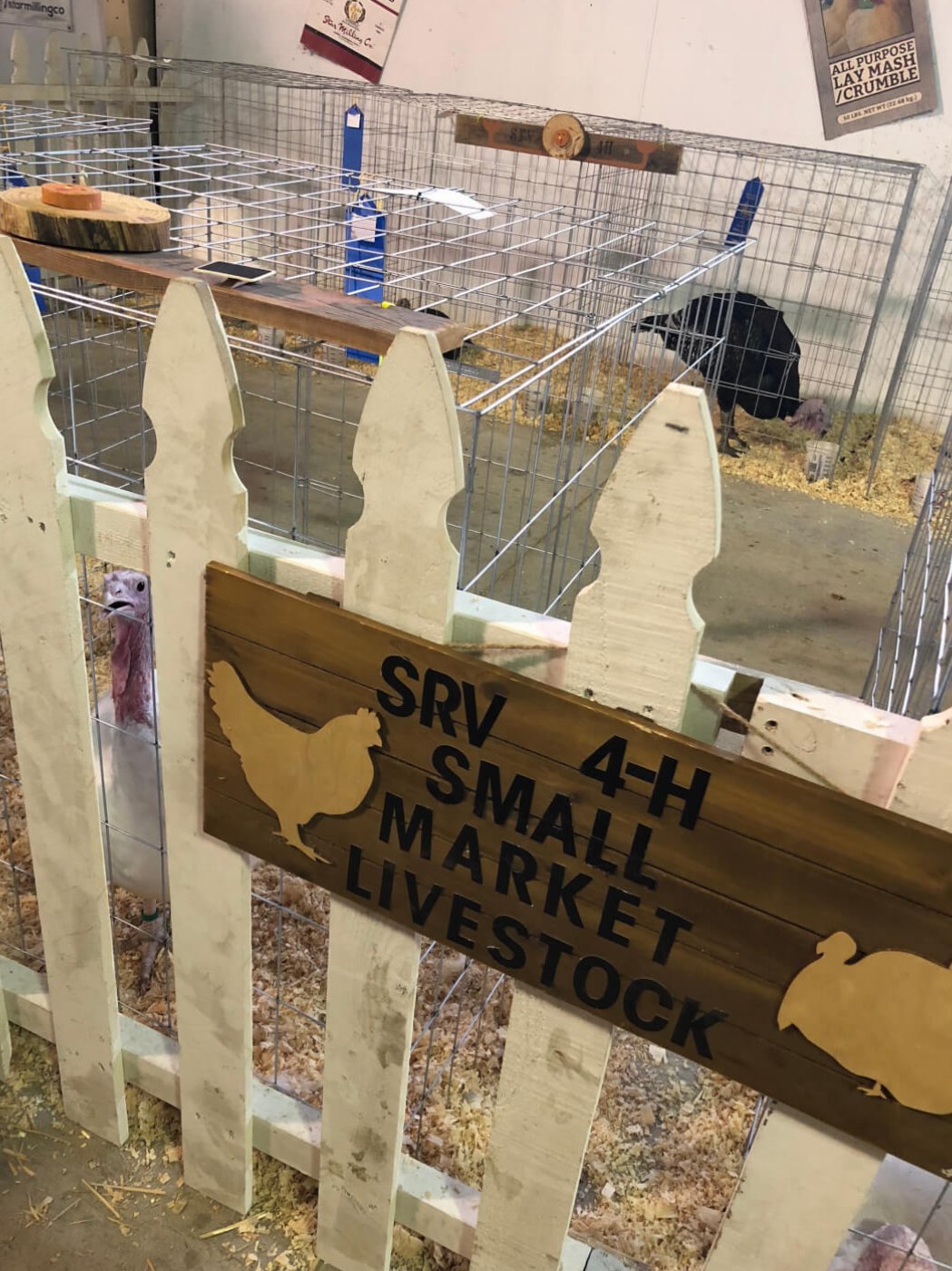
The young boys and girls who participate in these events often don’t fully grasp that the animals they are raising and love will be slaughtered for monetary gain.
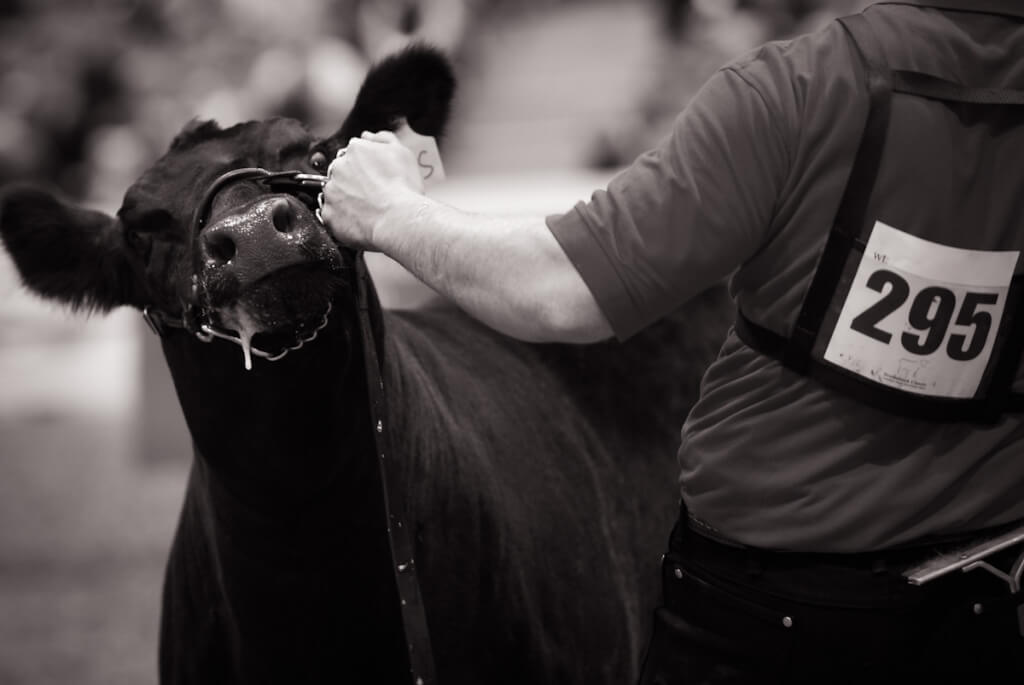
We’ve heard from numerous students who were absolutely heartbroken to learn this, including Alena Hidalgo from Pearland, Texas. As part of her agricultural program, she raised Gizmo, a pig. The two bonded, and when the time came to send him to slaughter, Hidalgo persuaded her school to let her send him to a local sanctuary instead. Gizmo is one of many animals Hidalgo has saved—after that ordeal, she decided to go vegan.
Click here to learn more about ways in which 4-H forces kids to betray their friends.
Other Animal Agricultural Displays
It’s not just 4-H. “Fair animals” are commonly displayed for competition. “They are celebrated for having the nicest coats or gait, prized for virility and awarded for submissive temperament,” according to We Animals.
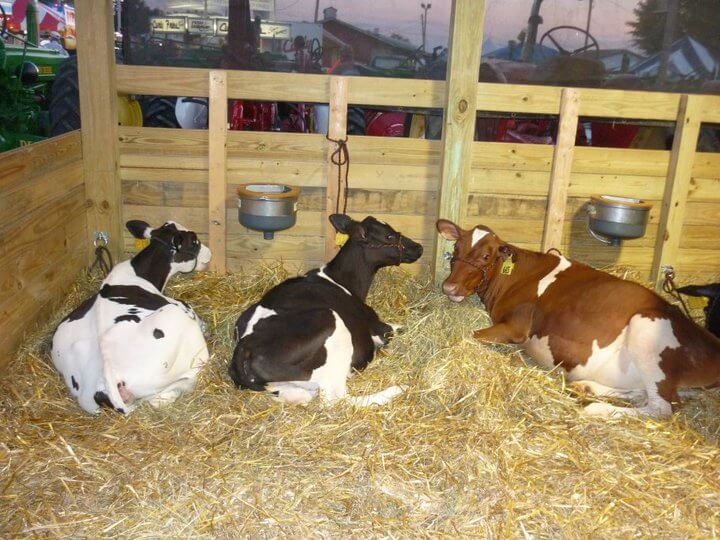
But after children and even well-intentioned adults have finished gawking and “aww”-ing at them, these animals are sold, many for slaughter.
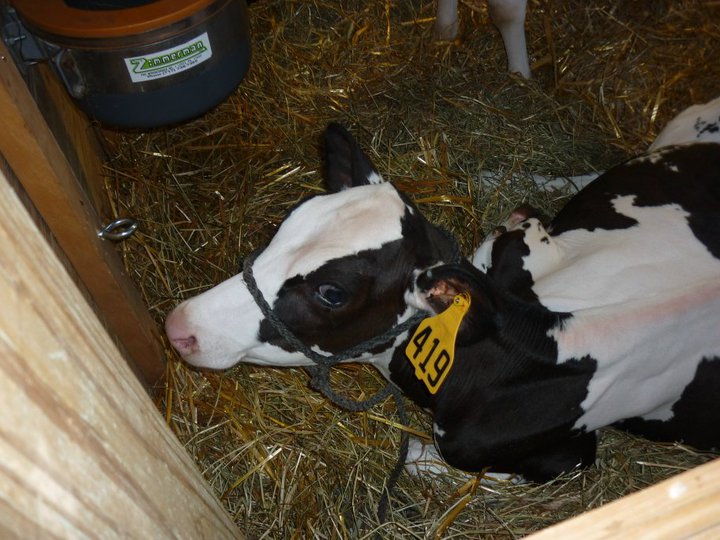
Rodeos
The rodeo—a violent spectator “sport”—is a staple at many state and county fairs. In rodeos, gentle animals such as horses and calves are provoked with spurs, tail-twisting, or electric prods and straps are cinched tightly around their abdomens to make them buck and run wildly around an arena.

Countless animals have paid with their lives to satisfy humans’ desire to play cowboy in these events—and so have humans.
Pulling Contests
In pulling contests, dogs, horses, and oxen are forced to drag hugely oversized loads.
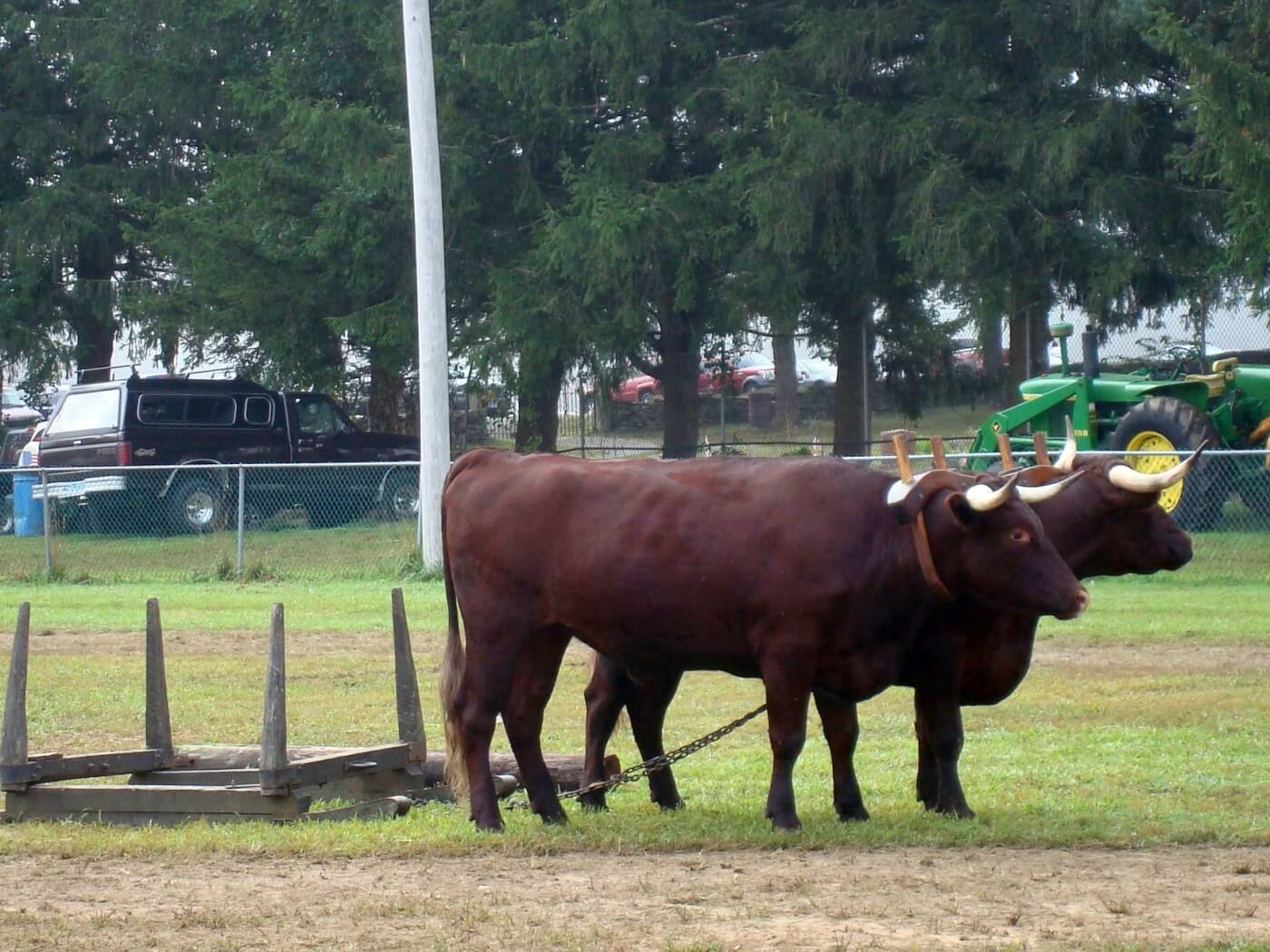
Although they’re meant to be competitions, the only actual “test” is whether the animals will end up with pulled muscles and tendons or potentially more harmful injuries, such as hernias or heart failure.
Pig Races
In the aforementioned races, highly intelligent and sensitive pigs—including some who are young and still developing—endure mishandling, noise from crowds, and blaring music.
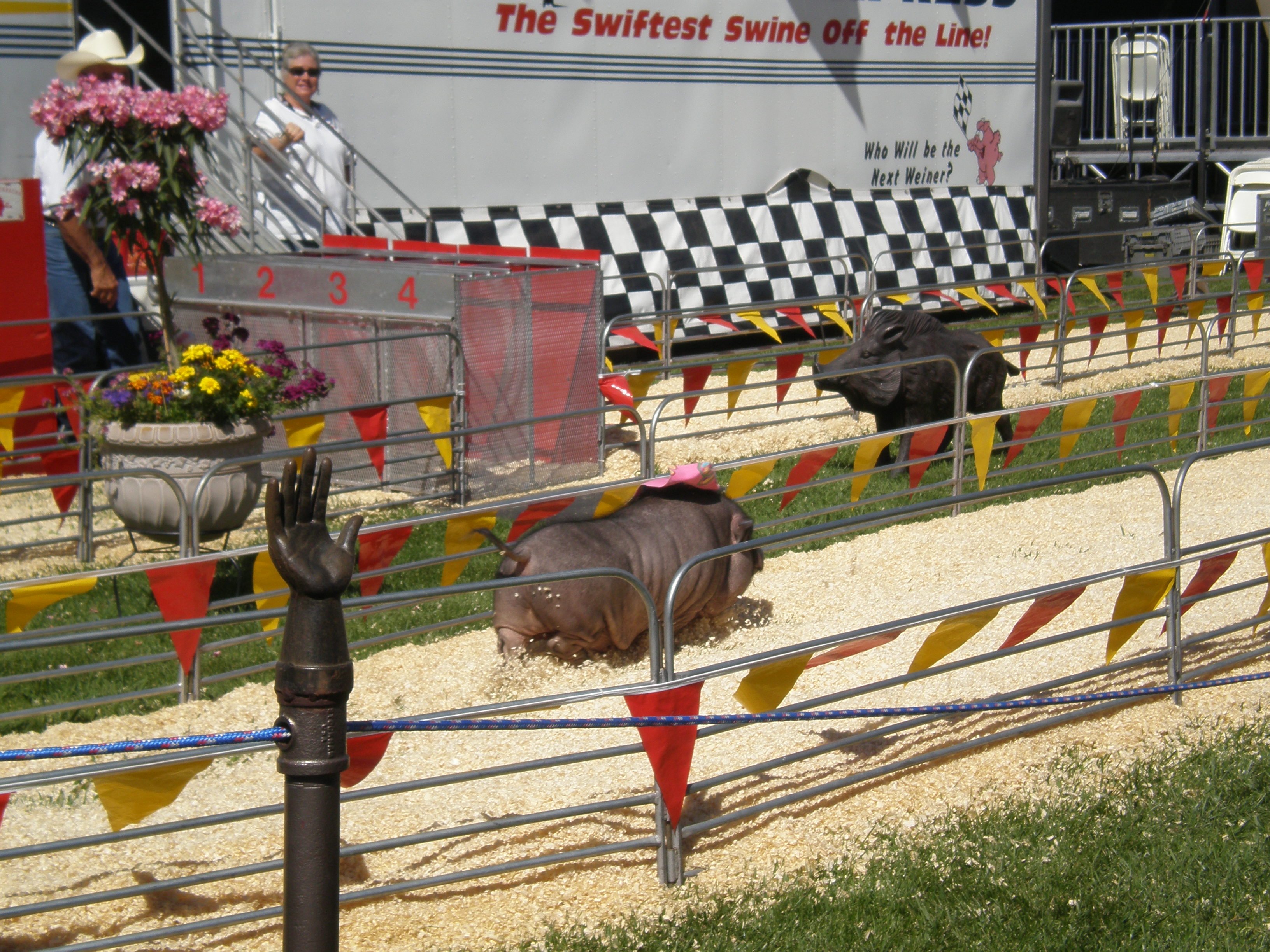
Spectators at these events, especially children—myself included, once upon a time—often don’t know that most of the pigs are sold for slaughter at the end of each season.
Pig Scrambles
During cruel pig scrambles, children are encouraged to chase down and catch piglets. The kids grab the animals, pull their tails and ears, tackle them, and throw themselves on top of them. Children who participate in these events come away with the belief that animals can be harassed for fun, no matter how terrifying it may be for them. No one could possibly assert that the piglets enjoy this event. Pigs forced to participate can sustain abrasions, dislocations, torn tendons and ligaments, and even broken limbs or backs. The stress caused by these events also poses extreme risks to their health.
Pig Wrestling
Pig wrestling and greased pig contests are typically for teens and adults. Just like the piglets used in scrambles, pigs forced to participate in these events are chased, grabbed, pulled, dragged, pushed, scratched, and tackled by human participants.
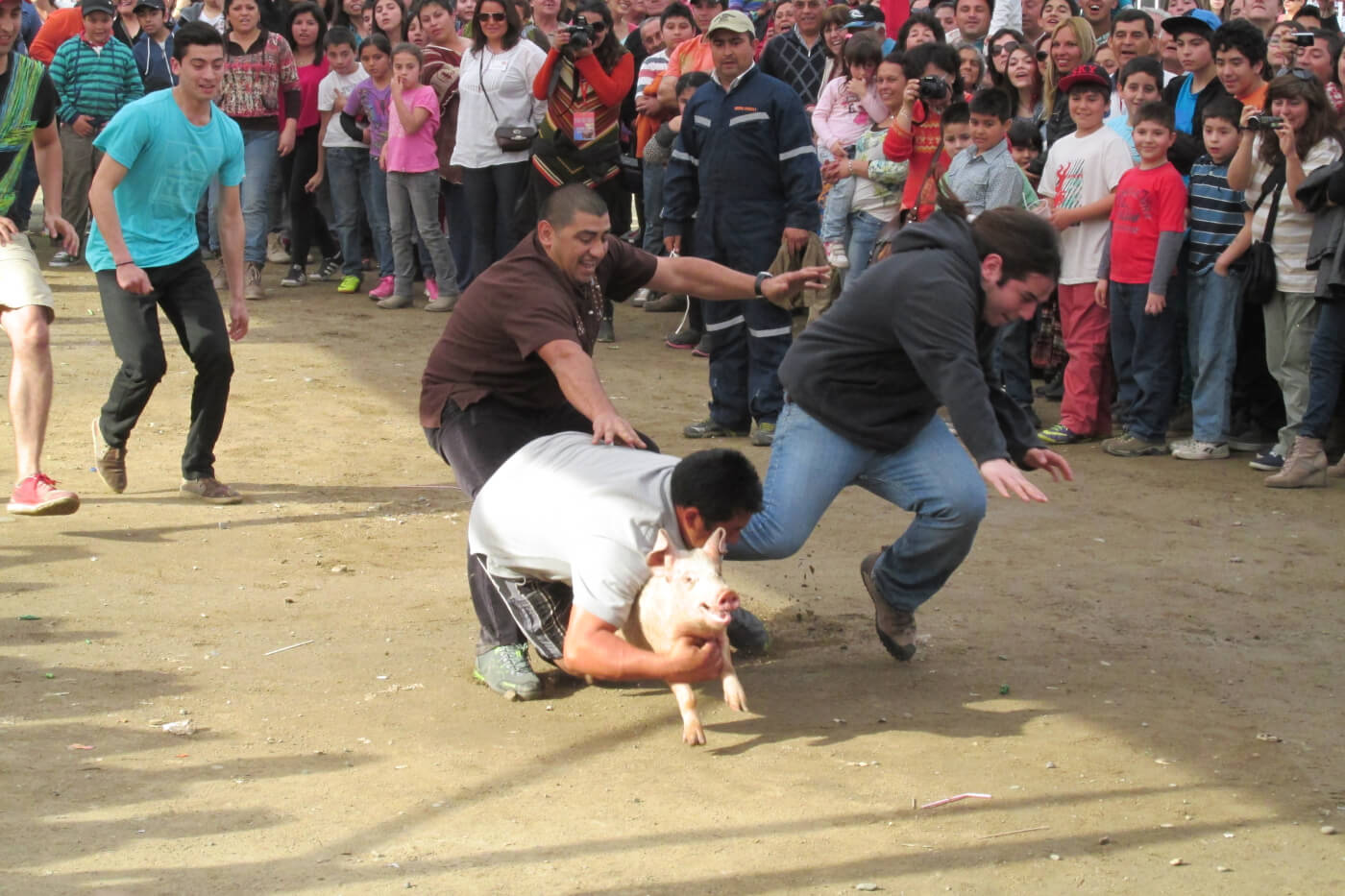
These pigs have nowhere to hide or escape to and no reprieve from the loud chaos. Contest “winners” are declared by picking up the pig and dropping him or her into a barrel, dropping or scraping the animal across the top of a barrel or similarly shaped object, stuffing the pig into a sack and dragging the sack to the middle or side of the arena before the clock runs out, or wrestling the pig to the ground and holding the animal down for a specified amount of time.
Exotic-Animal Shows and Displays
Exploitative events such as Sea Lion Splash and dancing-bear shows portray intelligent animals as silly clowns. This past May, PETA and Long Island Orchestrating for Nature (LION) demonstrated outside the Empire State Fair in Uniondale, New York, to protest notorious exhibitor Sea Lion Splash. Even though PETA informed the State Fair Group of the exhibitor’s numerous federal Animal Welfare Act (AWA) violations—including failing to supply adequate veterinary care to sea lions suffering from painful conditions—fair organizers refused to cancel the cruel act.
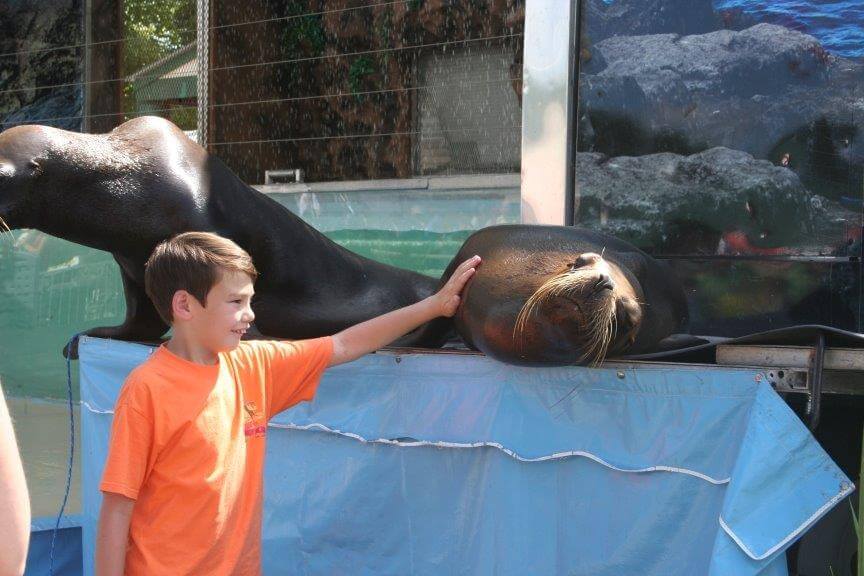
These sea lions and other animals like them suffer tremendously when they’re carted from town to town and forced to perform. They live in an almost constant state of discomfort, frustration, depression, and anxiety. Always on the move, exhibitors rarely take the time to exercise animals or give them adequate rest, and sick and injured animals often go without veterinary care.
The acts that animals are forced to perform are demeaning, and trainers often employ cruel behind-the-scenes training techniques—such as beatings and food deprivation—to force animals to perform tricks that are unnatural, frightening, and even painful. But even when they’re not forced to perform, animals on display still suffer. For example, consider the nurse sharks who were kept inside a small tank and put on display at the Santa Barbara County Fair:
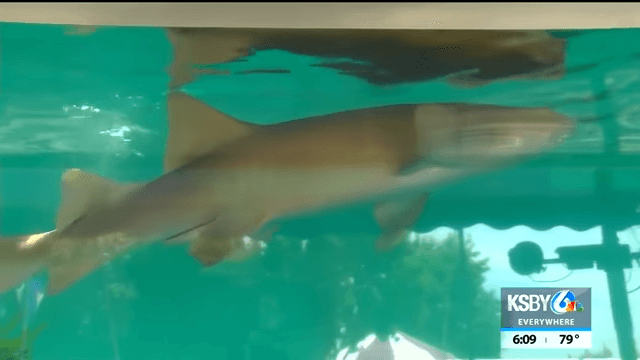
The tank that these sharks are forced to live in is a fraction of the size of their natural habitat. Sharks, like other animals, are sensitive beings who need room to roam. Supporting one of these cruel attractions is like buying a ticket to SeaWorld or patronizing a circus. After hearing from PETA and our members and supporters, the International Cherry Blossom Festival in Macon, Georgia, canceled a similar nurse shark encounter and decided not to host any events exploiting animals at all, proving that it pays not to be silent.
Big-Cat Photo Ops
Booth operators at many state and county fairs breed big cats to draw paying customers. Once they grow too large to be safely handled, older animals are frequently discarded at roadside zoos or sold to exotic-animal dealers.
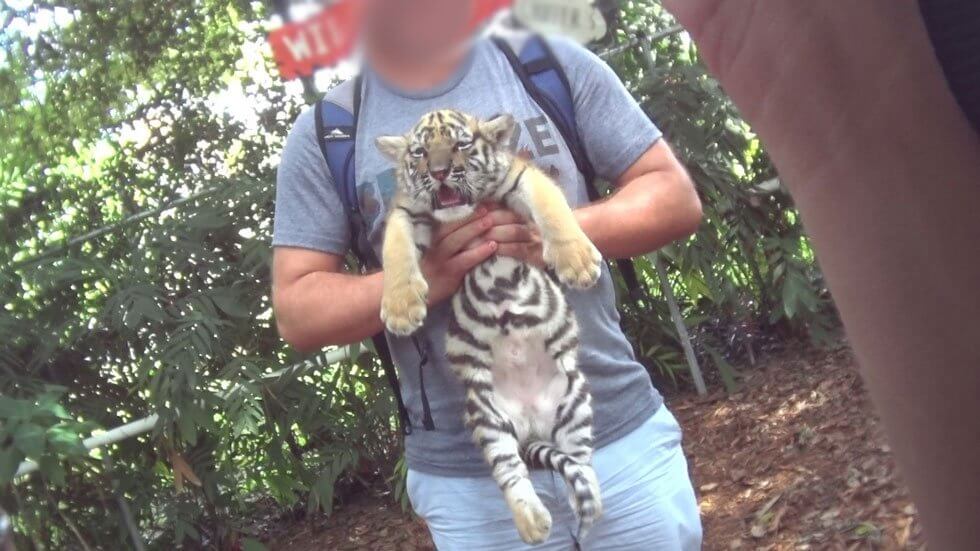
Three 11-day-old tiger cubs died when exhibitor Craig Perry, operator of Perry’s Exotic Petting Zoo, used them in photo sessions. Although he knew that the cubs were sick, he didn’t provide them with veterinary care.
Pony, Elephant, and Other Animal Rides
Tethered tightly to turnstiles and forced to plod in endless circles, ponies can develop hoof ailments, and many suffer from sore, chafed skin caused by ill-fitting equipment. Ponies used for rides aren’t protected by the AWA, and when local or state authorities fail to intervene, the outcome can be fatal.
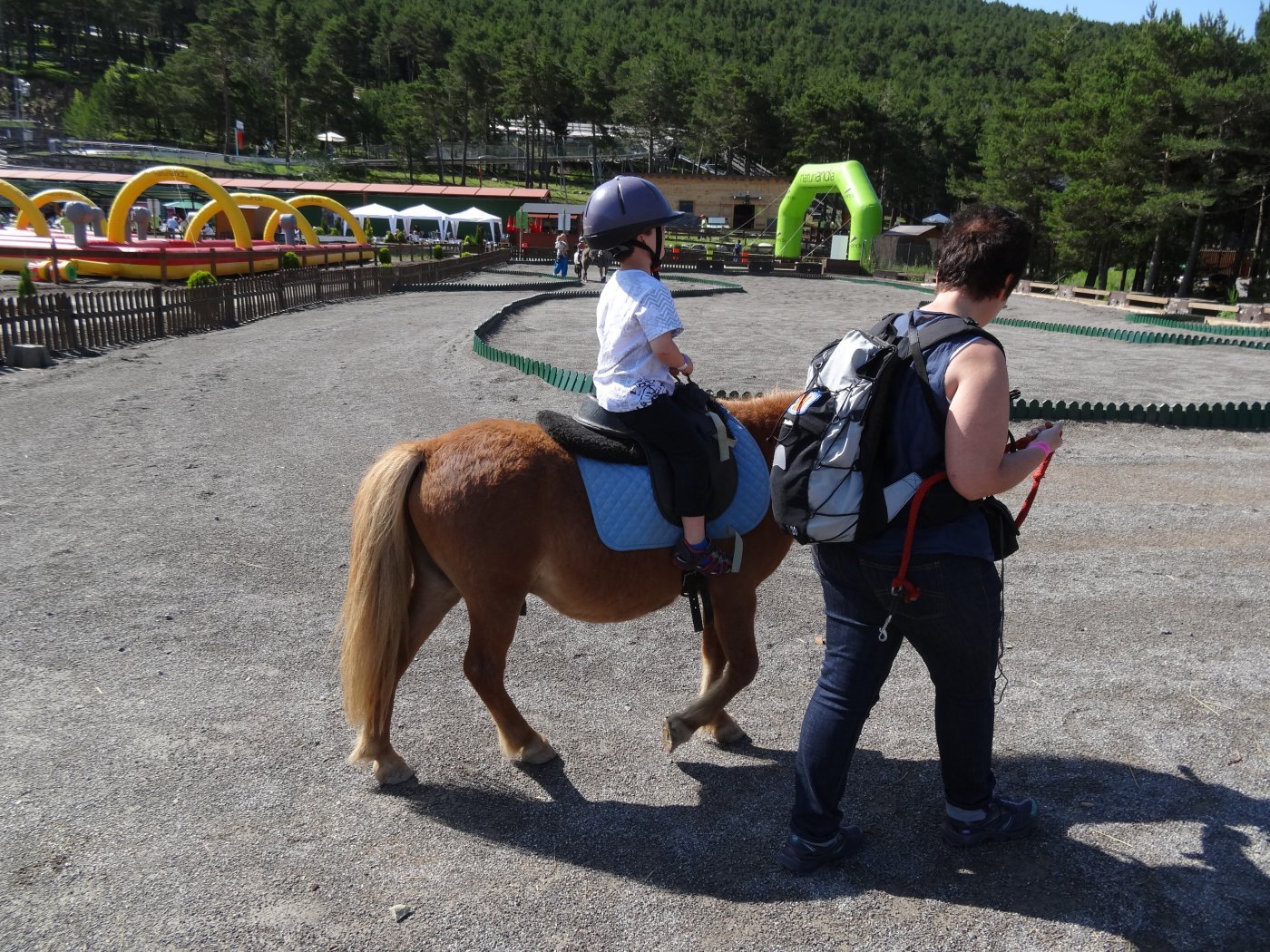
For elephants and camels used for rides and carted from venue to venue, life bears no resemblance to their natural existence. Stuffed into cramped, hot trucks and trailers, transported across the country, and used for entertainment, these intelligent animals are forced to carry patrons on their back while plodding in circles for hours.
For years, abusive handler Hugo Liebel forced Nosey the elephant to perform grueling tricks and give rides, even though she showed signs of painful, crippling arthritis.
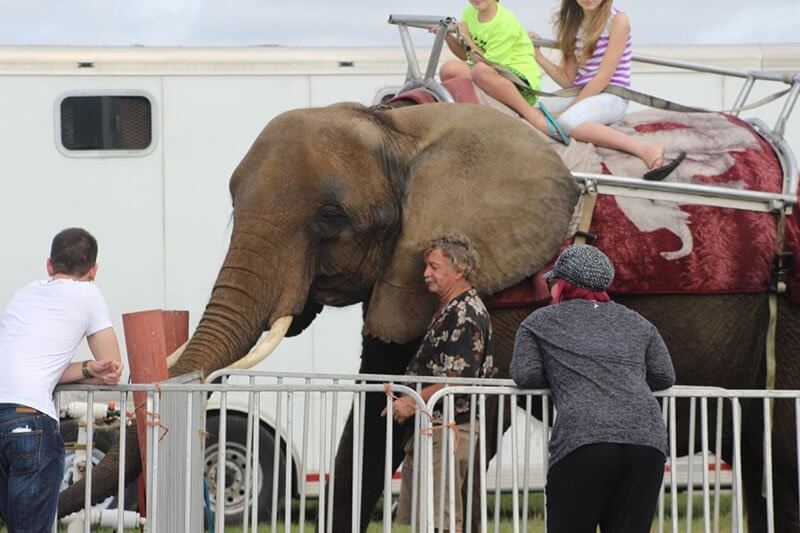
Now—thanks to a PETA campaign that began in 2004, along with the efforts of many other caring parties—Nosey is finally getting the fairytale ending that she so rightfully deserves. But other animals like her are still forced by exhibitors such as Carson & Barnes Circus to give rides for hours, all just so that humans can go for a five-minute joyride (joyless for the animals). Click here to help some of them.
Petting Zoos
The animals used in petting zoos are hauled around in tractor-trailers, confined to small pens and cages, and forced to interact with large crowds of people.
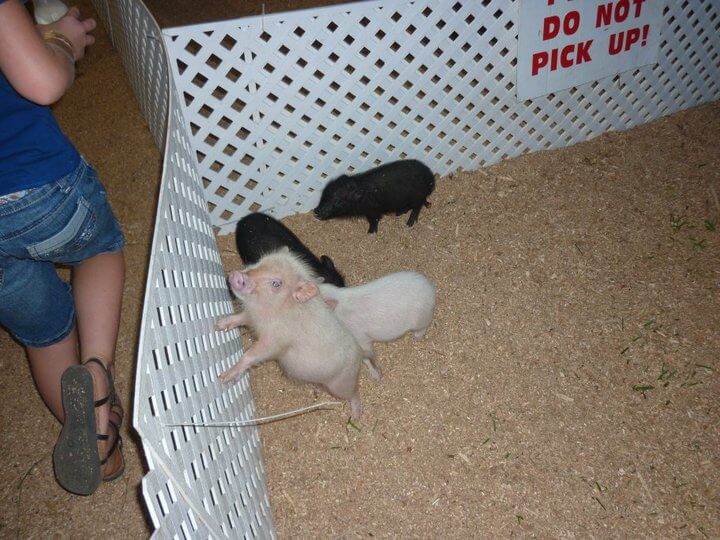
These animals are rarely allowed to rest when on display, and they often develop health problems from this forced interaction.
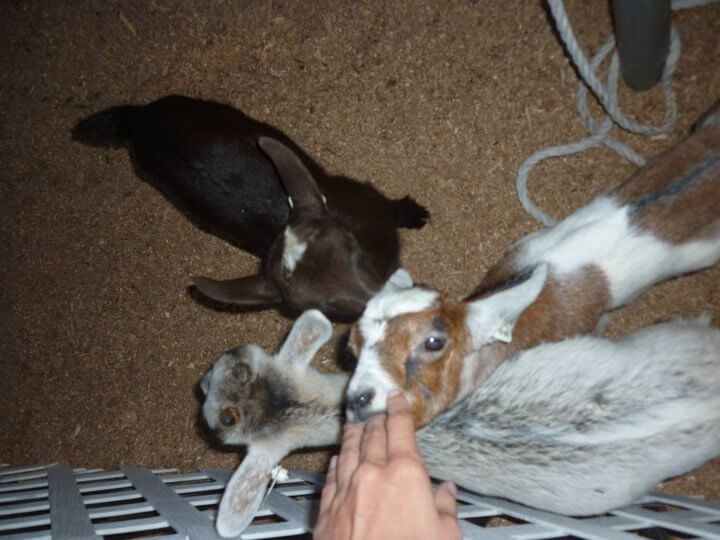
Petting zoos are bad news for animals and humans. They subject animals to the stress of transport, alien environments, irregular feeding and watering, mishandling, and crowds of strangers.
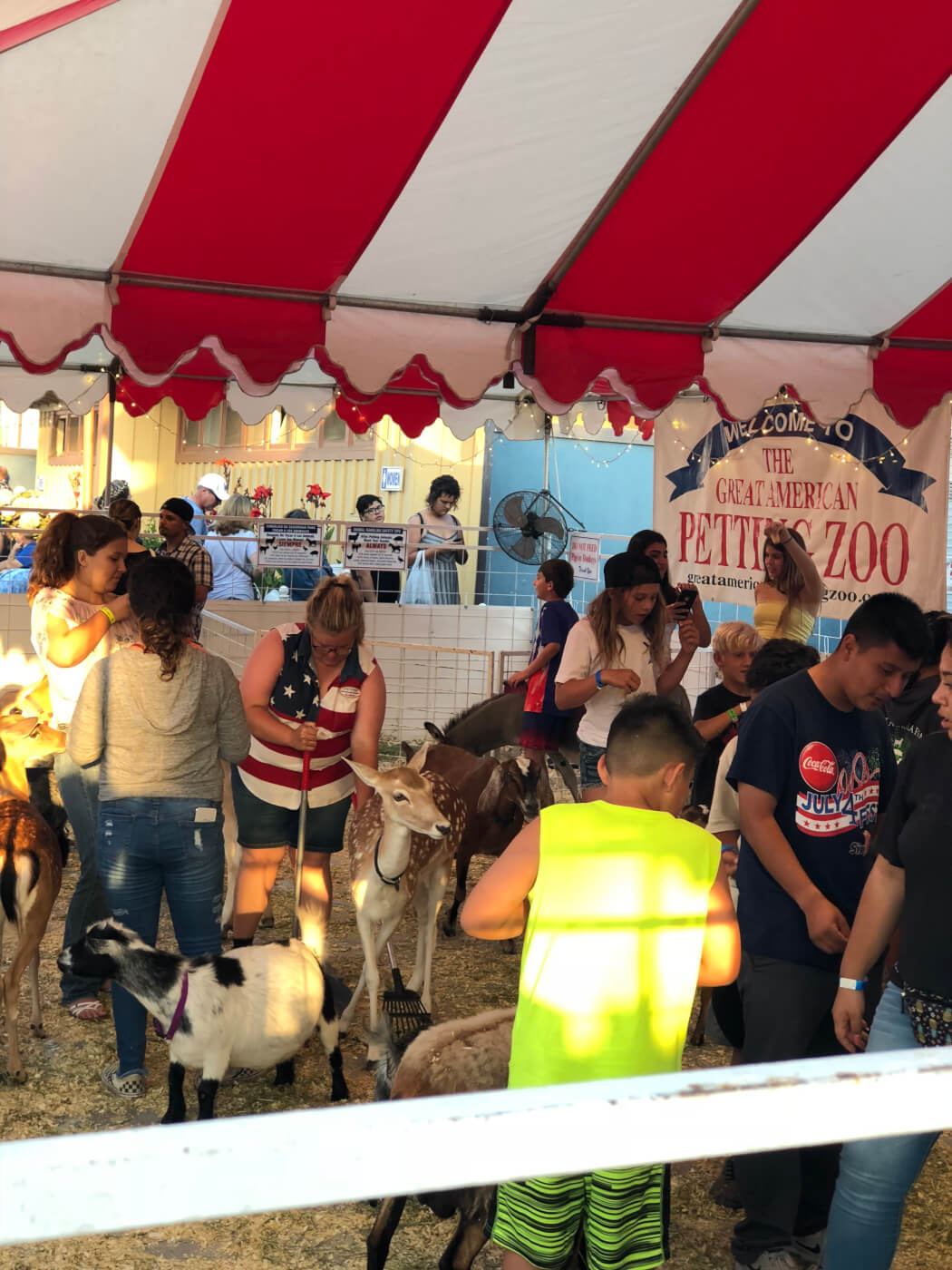
Countless people have been sickened—and some have died—after contracting diseases from animals in petting zoos.
Animal ‘Freak’ Shows
The “bearded lady” and the “world’s strongest man” can consent to participating in “freak” shows—animals can’t. Fairs market oversized and undersized animals as the “world’s largest horse” (draft horses), the “world’s smallest horse” (miniature ponies), the “world’s largest ‘rat,’” (typically a capybara or nutria, large aquatic rodents), or the “world’s largest snake (or alligator).” These animals are often confined to cramped, sweltering pits, cages, or tanks, barely able to move, so that ticket buyers can gawk at them. These shows aren’t freaky—they’re exploitative and cruel.
Animals Used as ‘Prizes’
The fate of goldfish, rabbits, hermit crabs, iguanas, and other animals who are given away as prizes or as promotional gimmicks in ping-pong, ring toss, and other games is often grim.
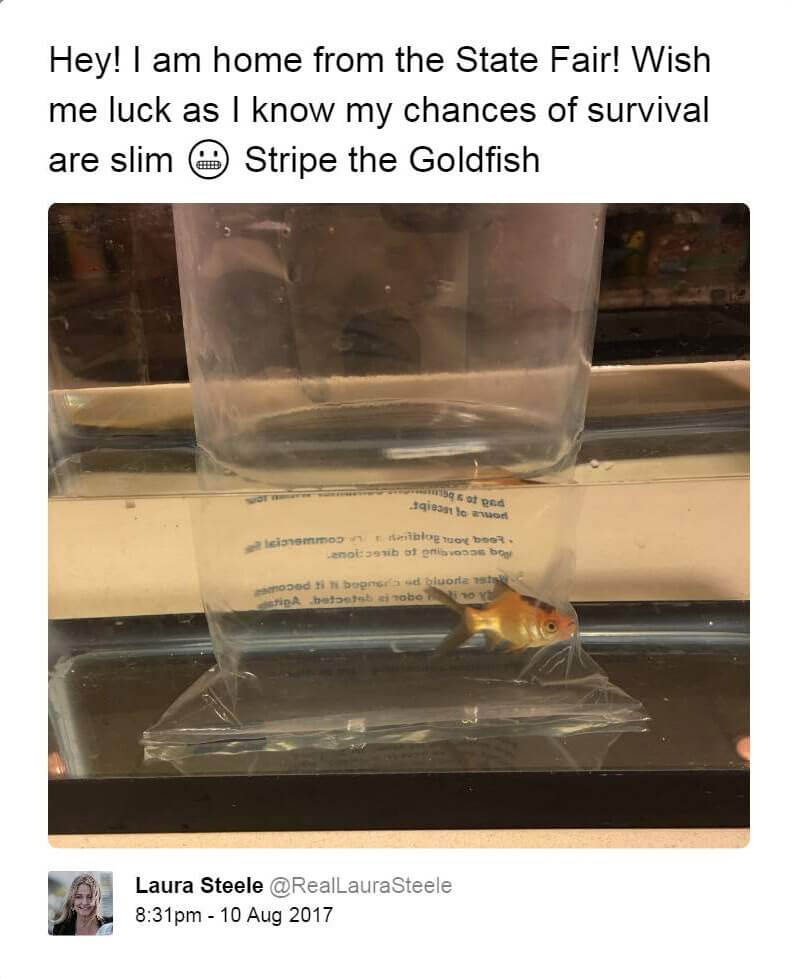
Fairgoers who “win” animals are usually provided with little or no instruction about caring for them and lack the knowledge, finances, or dedication required to meet their specialized needs. Many perish within weeks, victims of mishandling, unintentional neglect, or, in some cases, deliberate cruelty.
Mouse or Rat ‘Roulette’
Small rodents—such as mice, rats, and gerbils—are placed on a roulette-style wheel, which is then spun. Dizzy and reeling, the animals eventually drop into a hole on the board. People who placed their bets on the number that the animal drops into “win” a prize.
Some Fairs Are Shaping Up
For years, Beulah—a female elephant from India—was forced to interact with and give rides for Sussex County Fair attendees. Then, in 2015, Nosey took Beulah’s place. But according to NJ.com, fair organizers decided to make a change following protests and a public outcry. Peanuts the elephant was introduced this year—a 300-pound replica elephant made of silicone and foam. Peanuts, who looks similar to a real elephant, can shoot water through his nose at guests. But best of all, Beulah, Nosey, and other real elephants like them are being spared suffering thanks to the cruelty-free creation.

Wild animals were kept off the Brookhaven Fair’s itinerary this year following letters, protests, and town meeting appearances by supporters of LION and PETA. In previous years, monkeys were forced to partake in rodeos. Lions, tigers, and bears had been forced to perform, too. But all that changed, thanks to persistence and activism.
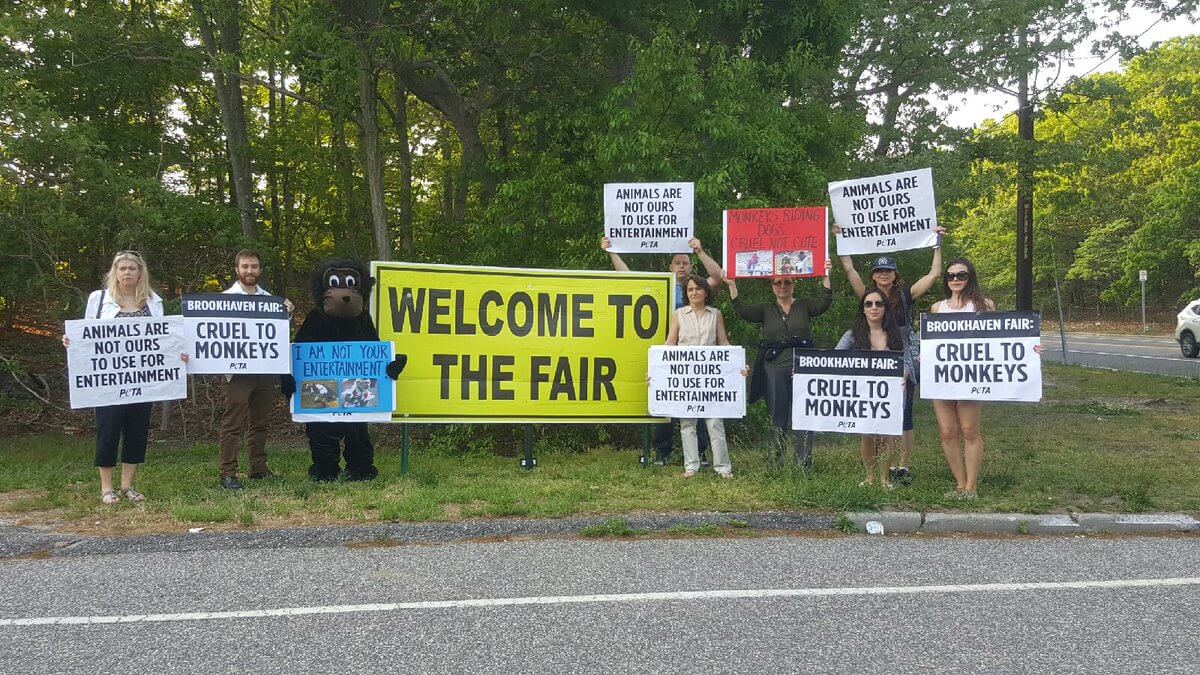
Fair food has also improved. For the last few years, folks attending the Los Angeles County Fair have been able to opt for delicious vegan fare, such as Plant Food for People’s jackfruit tacos, nachos, and tortas:
But there’s still so much room for progress. Peanuts was created following protests from animal rights activists. Speaking up works. We must make our voices and actions impossible to ignore. If you see cruelty to animals at any state or county fair, don’t hesitate to take action. Anyone can file a cruelty-to-animals complaint or ask the local animal control agency to check on an animal. Click the buttons below to do more:
Written by Katherine Sullivan

